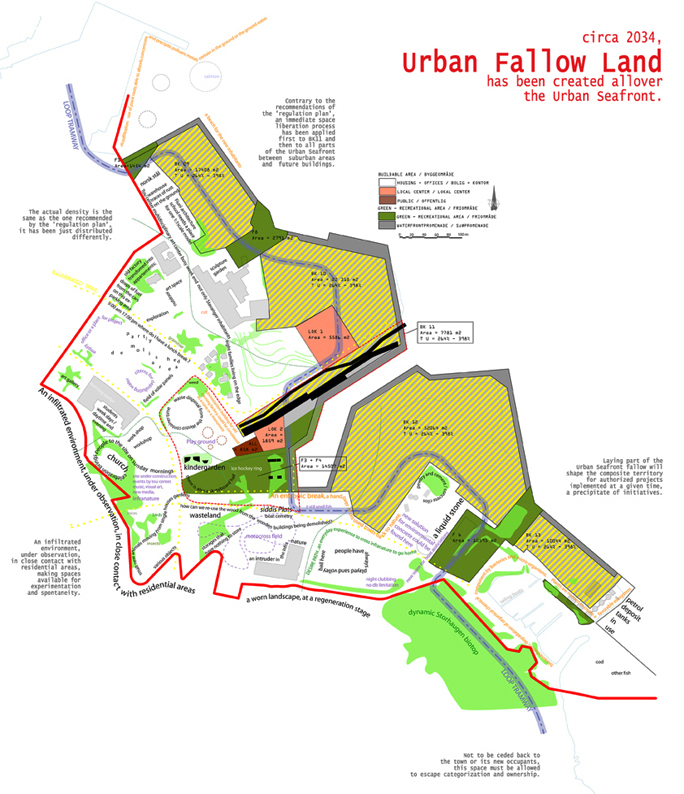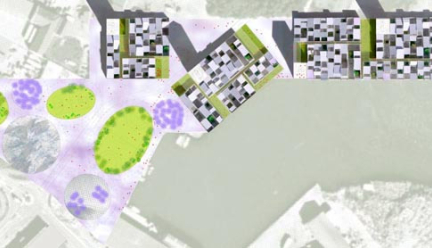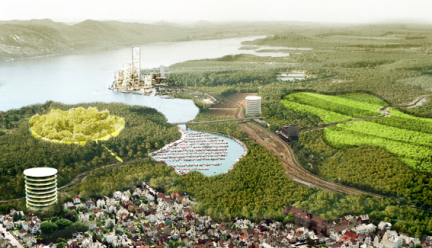Project:
Infranature

About
-
The re-colonization of the Urban Sjofront is based on a fictional approach for the whole territory of Stavanger. In 2100, The Post-Oil City is developing new energies and making a renewed call for urban territories. Stavanger is becoming a territory of permanent renewal, creating an environment suited to its uncertain evolution: a global landscape of transition. A space liberation process is going on in parts of the former industrial port for self-regeneration and for the development of a potential for r–euse: a composite landscape open to unplanned modification. An infiltrated environment, under observation, making spaces available for experimentation and spontaneity, an “urban fallow land” in close contact with existing and future residential areas: an extreme urban configuration fostering living conditions at infranature’s edge.

-
The site, which lies on the edge of the city centre of Stavanger, is an industrial area in decline. It is now being slowly transformed into new housing, offices, and cultural facilities. The competition challenges participants to make strategic illustrations of how to further develop existing physical, social, and cultural resources.
The two awarded projects (winner and runner up) represent two different strategies, one that focuses on a high quality housing and mixed-use building structure for the competition site (Winning project "Beyond the horizon"), and one that restructures the whole competition area as a field for a new, long-term urban ecological development (Runner up project "Infranature")
Both projects discussed how the study area could respond to the local cultural and ethnic multitude, its mix of functions and living conditions.
Each project investigates possible development trends that the jury found were very interesting comments to the newly adopted regulation plan.
As point of departure, Infranature establishes a fictional scenario for the future (year 2100), when development of new energy resources calls for new use of our environment. Oil and gas are no longer the dominant energy resources and cities need new territories where a productive and composite nature enables new production and living conditions. The project proposes an "urban fallow land", a landscape open for experimentation and spontaneity. The project calls for the necessity to develop more sophisticated tools in order to deal with urban phenomena resulting from post-industrialization and other real estate/market-driven processes, increasingly becoming more unpredictable and more violent.
This bold project offers some fascinating if elusive strategies for the case of Stavanger, and goes on to project them into a substantial temporal horizon. The imagery produced by the project suggests some interesting re-readings of what a city really is and how the city spaces give shape to culture. It is precisely from this once almost "terrain vague" or "hinterland" quality of the Urban Sjofront area that the area's cultural and educational profile has grown. The project identifies some very important driving forces in the area, and proposes to reinforce them by laying larger parts of the study area fallow.
-
Guillaume André (FR)
Alice Dietsch (FR)
Denis Gabillat (FR)
Frédéric Garrigues (FR)
architects

